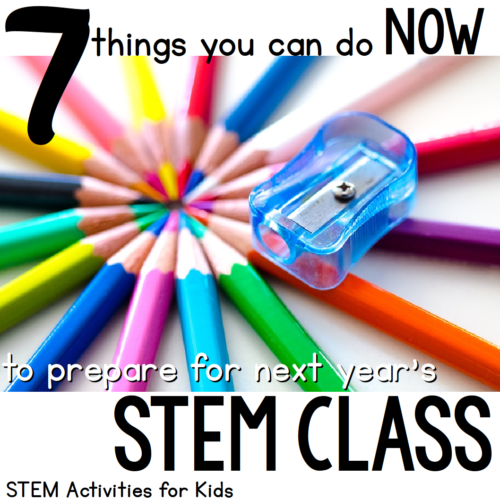
Are You Ready for Next Year’s STEM Class?
As the school year winds down, you are probably not ready to start thinking ahead to the start of next school year. You can make your transition back to school in the fall much smoother, though, by preparing now for next year’s STEM class. You’ll be glad you did once school starts up again, trust us! The educators at STEM Activities for Kids put our heads together to come up with our top tips for making sure your upcoming STEM year goes as smoothly as possible.
Tip #1: Request Supplies
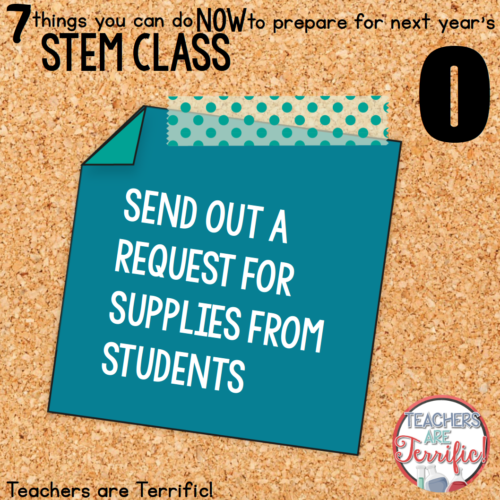
clip art via www.teacherkarma.com
Carol from Teachers are Terrific suggested this great idea she used last year:
At the end of the year each grade level sends home a school supply for the students that will be moving up. I added something for STEM to each list. Third graders brought straws, fourth graders brought craft sticks, and fifth graders brought paper towels. We are doing this again with different materials.
What I love about this is that each year you can build up your stash of the big consumables. If you know you will be doing a specific set of STEM challenges, request materials for those particular challenges. Other great supplies to ask for are glue sticks, masking tape, and index cards.
Tip #2: Request Recyclables

clip art via www.teacherkarma.com
What if you work in a district where you know you can’t ask for purchased supplies from home due to financial reasons? Renee from the Science School Yard has found a great workaround:
We collect toilet paper tubes, newspaper, bubble wrap and other recyclable products. This allows our parents to feel that they can contribute and not spend anything to help their children. We have gotten creative with what we can purchase at the Dollar Store and the school allows us to use the straws. We have a breakfast program so when we have yogurt or cereal containers that we could use and we even have a stash of milk cartons ready for our projects, the students in certain classrooms wash them and bring them to the science room. Being resourceful is key to planning ahead. What we get we figure out ways to use them.
This is just SO brilliant! So many resources that are perfect for STEM challenges and activities just get tossed in the recycle bin, or worse, the garbage can. Why not encourage a school-wide STEM recycling/upcycling program for all of those items that Renee mentioned? Packing materials and cardboard tubes are always useful in STEM class.
Tip #3: Request Donations from Local Businesses
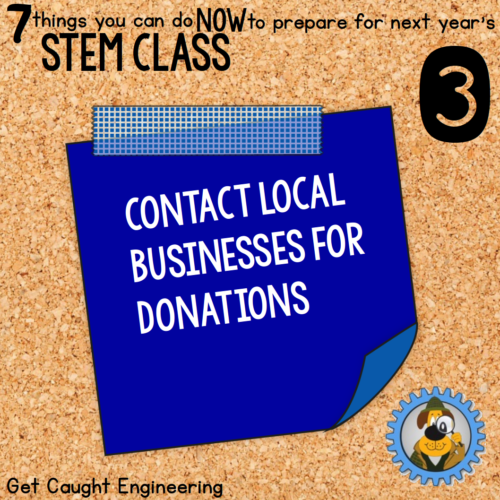
clip art via www.teacherkarma.com
Wendy from Get Caught Engineering full STEAM ahead at the start of a new school year, with STEM and Back To School : Take One! Action! How does she keep all of her materials organized and sorted so that they are easily accessible to do these challenges? She has reached out to local businesses for donations in the past with stellar results:
A few summers ago we contacted a recycling company and they bought us some very cool shelves with drawers from Costco for materials.
What a generous offer! You never know who might be willing to help outfit your STEM lab or makerspace. If there are any businesses that are going out of business, they might be looking to get rid of shelving or storage units.
Carol from Teachers are Terrific mentions that she has received recyclables from a local hardware store that would otherwise be disposed of – such as cardboard and paper products:
I get the industrial strength toilet paper tubes that won’t bend or collapse.
These industrial strength tubes are FANTASTIC for STEM projects. Why not offer to give a shout out to the businesses in your newsletter? They’ll be appreciative and hopefully you can build a long term relationship.
Now that we’ve taken care of the materials, here are some other ways you can prepare for STEM class!
Tip #4: Integrate, integrate, integrate!
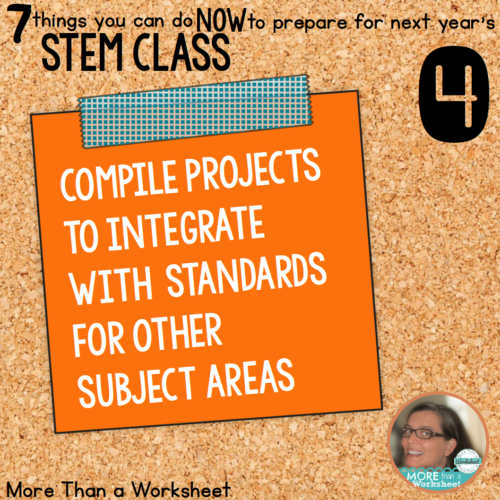
clip art via www.teacherkarma.com
Sarah from More Than a Worksheet has a wonderful tip that I just love! It’s such a useful reminder to anyone who thinks they don’t have time for “extras” like STEM. If you are determined to use STEM projects in your classroom next year, see what topics you can combine STEM activities with:
Start compiling projects that you can integrate with your standards for other subject areas.
I am totally on board with this. You can add STEM aspects to almost any lesson if you think creatively. Look at some of these clever ways you can integrate STEM into lessons you may already plan on exploring next year:
| Subject | STEM Integrated Activity (click to read more) | |
|---|---|---|
| Force and Motion | Try Cardboard Tube Rockets | 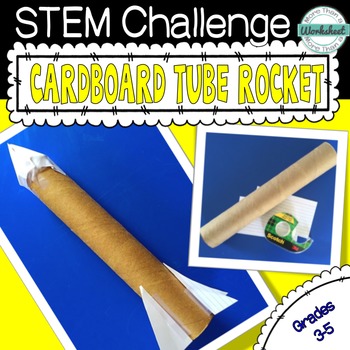 |
| Environmental Awareness | Try Oil Spill STEM |  |
| Ancient History | Try Ancient History STEM |  |
| Hands-On Volume | Try Volume STEM Challenges |  |
| Animal Adaptations | Try Bird Beak Stations |  |
| Angles and Projectiles | Try Pumpkin Catapults | 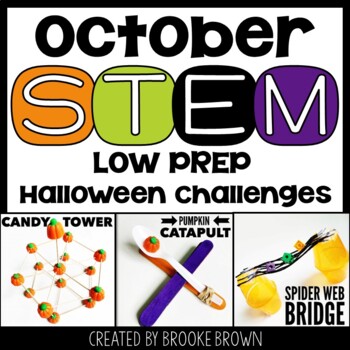 |
| Famous Paintings and Artists | Try Technology Integrated STEAM | 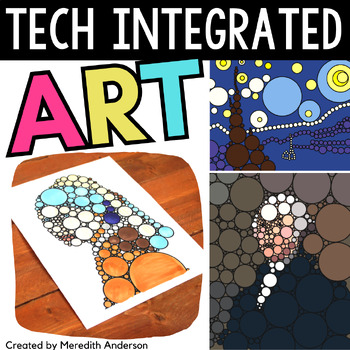 |
If your kids LOVE doing STEM projects, you can convince them to love just about any subject by using STEM as the springboard. If they are hesitant about STEM, you can draw them in with something else they already love. It’s a two-way, win-win street!
Tip #5: Tour Local Makerspaces
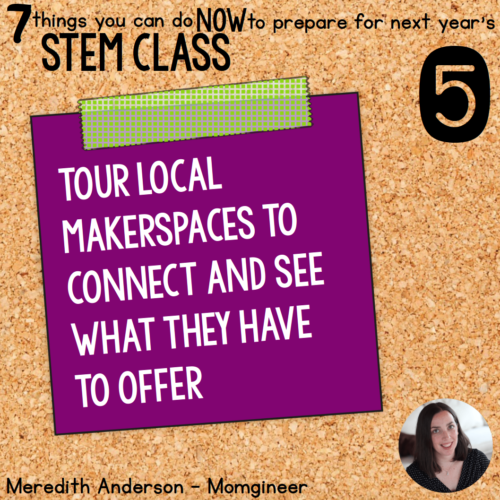
clip art via www.teacherkarma.com
My tip is based on all the knowledge I gained over the past year visiting and working with local makerspaces. There is a LOT of knowledge and expertise to be gained from these community STEM enthusiasts. Do you know what the latest STEM tools and gadgets are? What are some staples and supplies that local makerspaces agree are important to have? If you are fortunate enough to receive a grant for your STEM lab, do you know what you’d like to acquire? Since makerspaces cater to a wide variety of age groups and interests, it’s worth asking for their input. They may have visited a makerfaire or STEM conference and have tips on upcoming releases, or they may be able to tell you that other resources aren’t worth spending the money on, especially if they don’t hold up to repeated use.
You may also be able to network with your local makerspace for other valuable information:
- see if anyone they know is willing to come in and talk to your students about STEM careers
- train you or older students on various makerspace equipment or software
- host a STEM day at the makerspace or travel to your school for a STEM open house. This may also be a great way to get other teachers and administrators on board with STEM learning.
Tip #6: Conduct a Survey
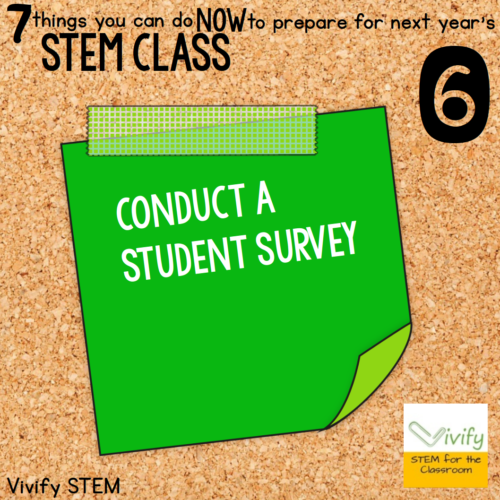
clip art via www.teacherkarma.com
Natasha from Vivify STEM wants to know what the students think. What better way to evaluate your resources by asking for honest feedback from the students themselves:
Conduct a survey to ask student input on their favorite activities or ideas to improve for next year. We do this at the end the year to improve our program.
The students will definitely remember the projects that they most enjoyed, as well as any that may have been too frustrating to be useful.
Tip #7: Label all the Things
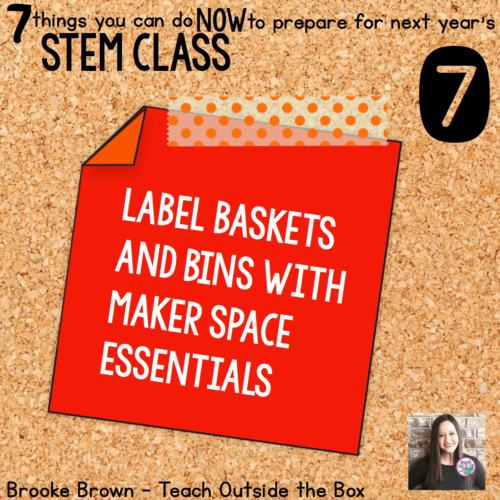
clip art via www.teacherkarma.com
Brooke from Teach Outside the Box has functional and inviting labels for all of your STEM supplies! Check out her Maker Space Starter Kit:
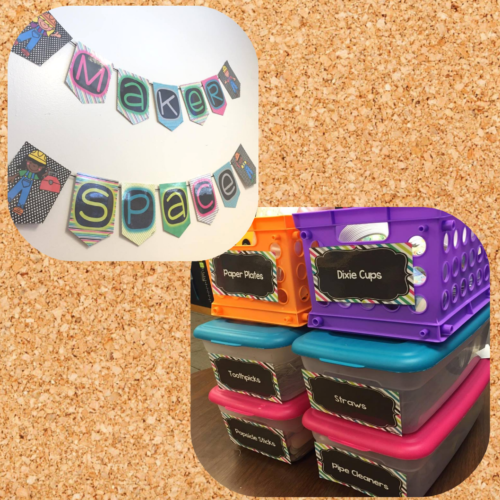
Not only will your supplies be organized, they will look good, too!
Get Caught Engineering is on board with effective organization for their materials, too. We have so much love for all of these fully stocked bins:
You’ve Got This
We hope you are feeling excited about jumping into next year’s STEM class in the upcoming school year. Don’t forget to look for grant opportunities if you are feeling overwhelmed by the cost, and don’t forget that a little legwork can go a long way in asking local companies for donations of supplies or recyclables.
I’m Still Overwhelmed. Help!
Drop us a comment below or on our STEM Activities for Kids Facebook page. We love to hear from you and are happy to answer any questions you might have about getting ready for a year of STEM-filled fun! And don’t forget to sign up for the STEM Activities for Kids newsletter – though an infrequent installment, it might help you out along the way!

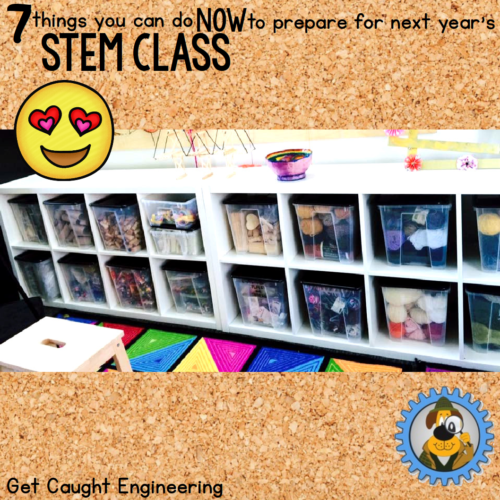
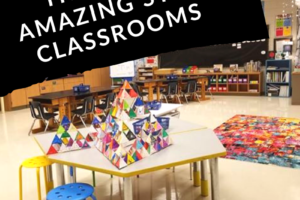

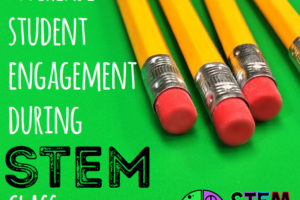
3 Comments
Leave your reply.